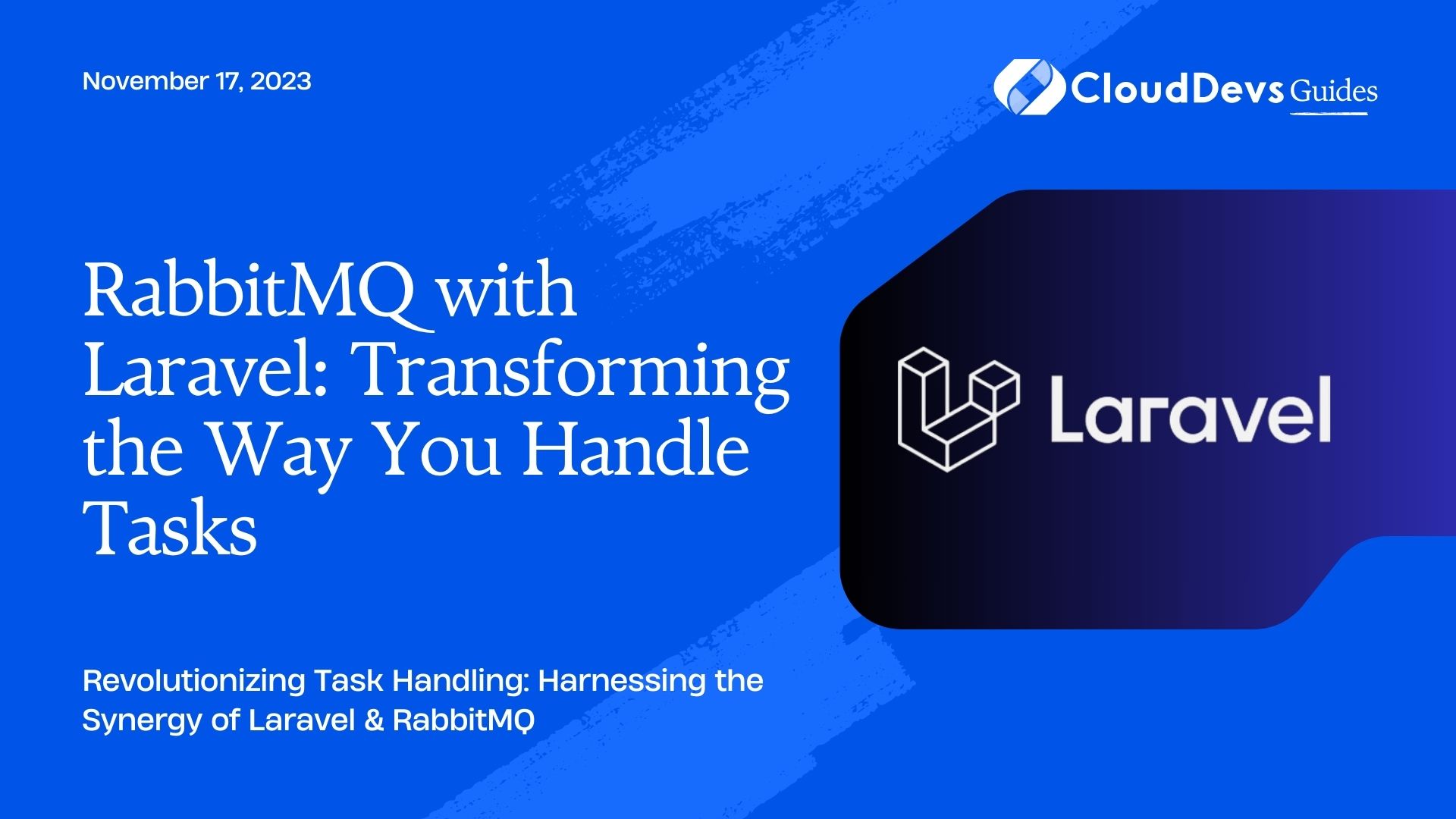RabbitMQ with Laravel: Transforming the Way You Handle Tasks
Laravel, a robust PHP framework, has always been praised for its ability to simplify complex tasks. Queues, an integral part of the framework, help in deferring the processing of a time-consuming task. With queues, you can delay tasks like sending emails or processing uploaded files to a later time, thereby speeding up web requests to your application.
In this article, we’re going to delve deep into how to supercharge your Laravel queues with RabbitMQ, an advanced messaging system, ensuring high-performance task processing.
1. Why RabbitMQ?
RabbitMQ is a message broker that enables applications to communicate by sending and receiving messages. It’s popular due to its scalability, reliable messaging, and ease of integration with a myriad of platforms, including Laravel.
Key benefits include:
- Durability: RabbitMQ can safely store messages until they are processed.
- Scalability: It can handle a large number of consumers and publishers concurrently.
- Flexibility: Decouples producers from consumers, allowing them to run and scale independently.
2. Setting up RabbitMQ for Laravel
Before integrating RabbitMQ with Laravel, ensure you’ve got both Laravel and RabbitMQ set up. If RabbitMQ isn’t installed, you can refer to the official [installation guide](https://www.rabbitmq.com/download.html).
After setting up RabbitMQ, install the Laravel queue driver for RabbitMQ:
```bash composer require vladimir-yuldashev/laravel-queue-rabbitmq ```
Update your `.env` file with RabbitMQ connection details:
``` QUEUE_CONNECTION=rabbitmq RABBITMQ_HOST=127.0.0.1 RABBITMQ_PORT=5672 RABBITMQ_VHOST=/ RABBITMQ_LOGIN=guest RABBITMQ_PASSWORD=guest RABBITMQ_QUEUE=your-queue-name ```
3. Using Laravel Queues with RabbitMQ
3.1. Defining Jobs
Laravel’s job class is where the logic of the queued task resides. Let’s define a simple job that sends a welcome email.
```php php artisan make:job SendWelcomeEmail ```
```php
// app/Jobs/SendWelcomeEmail.php
public function handle()
{
Mail::to($this->user)->send(new WelcomeEmail($this->user));
}
```
3.2. Dispatching Jobs
You can dispatch the `SendWelcomeEmail` job as follows:
```php SendWelcomeEmail::dispatch($user); ```
The job will be dispatched to the RabbitMQ queue, and a worker will pick and process it when available.
3.3. Running Queue Workers
Start a worker to process jobs in the queue:
```bash php artisan queue:work rabbitmq ```
The worker will continuously process new jobs in the RabbitMQ queue.
4. Advanced Features
4.1. Job Prioritization
With RabbitMQ, you can define different queues to prioritize jobs. For instance, you might have a ‘high’, ‘medium’, and ‘low’ queue.
```php
SendWelcomeEmail::dispatch($user)->onQueue('high');
```
Ensure you’ve defined these queues in the `.env` file.
4.2. Job Delays
Delay job execution by a specified number of seconds:
```php SendWelcomeEmail::dispatch($user)->delay(now()->addMinutes(10)); ```
4.3. Job Chaining
Execute jobs sequentially:
```php
SendWelcomeEmail::withChain([
new SendFollowUpEmail($user),
new NotifyAdmin($user)
])->dispatch($user);
```
5. Monitoring and Error Handling
RabbitMQ has a management plugin that provides an intuitive UI for monitoring and managing queues. Install the plugin:
```bash rabbitmq-plugins enable rabbitmq_management ```
Access the dashboard via `http://server-name:15672/`.
If a job fails, Laravel and RabbitMQ provide mechanisms to retry or even discard the job after a specified number of attempts.
Conclusion
Pairing Laravel’s elegant queue system with the power of RabbitMQ provides a potent combination for high-performance task processing. This setup not only accelerates web request responses but also ensures that tasks are reliably processed even under high load. As your application grows, consider leveraging the dynamic duo of Laravel Queues and RabbitMQ for optimal performance.
Table of Contents







